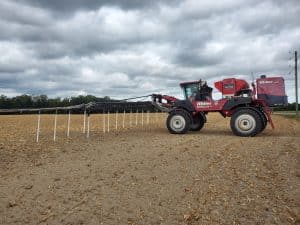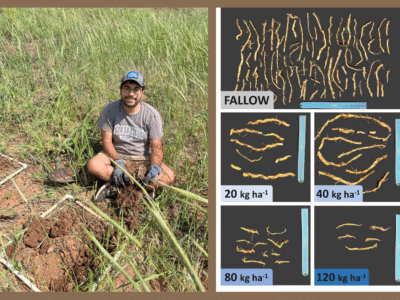The numbers are in, and weed control remains one of farmers’ primary – and most successful – goals for adding cover crops to their operations.

That’s one of the takeaways from the 2022-2023 National Cover Crop Survey, an annual review of farmers’ use of cover crops, conducted by the Conservation Technology Information Center (CTIC), in conjunction with Sustainable Agriculture Research and Education (SARE) and the American Seed Trade Association (ASTA).
The survey asks a large range of questions, with one section devoted to how farmers are using cover crops for weed management. The responses suggest that cover crop use for weed suppression is growing more sophisticated – with more farmers than ever using practices like planting green – and more successful, with the majority reporting significant weed suppression from their cover cropping.
The Respondents
This year, the survey was answered by 795 farmers, with 80% identifying themselves as active cover crop users. Respondents hailed from 49 states, but the majority came from seven Midwest states: Iowa, Illinois, Ohio, Minnesota, Indiana, Missouri and Nebraska. They reported a diverse spread of farm size, from single-acre farms to operations spanning more than 2,000 acres. Commodity farmers and specialty crop growers made up three-quarters of the group, and most practiced some kind of no-till or conservation-till, with only 13% using vertical or conventional tillage.
This year’s survey uncovered an interesting evolution in farmers’ approach to cover crops, the surveyors noted. Economic incentives continue to matter, but more farmers’ cover crop practices seem driven by conservation and agronomic goals than ever before. While nearly half were receiving incentive payments on their acres, 90% of those farmers indicated that they intend to keep using cover crops after the payments ended, and only 3% were prepared to abandon the practice when incentive programs ran out.
Cover Crops and Weed Suppression
Weed management ranked high among cover crop uses, with nearly 80% of respondents listing it as a primary goal. Moreover, improved weed control appears to be a largely successful goal for the cover crop users, with 88% reporting that progress had been achieved toward this goal.
That’s good news, since another 60% of respondents reported having herbicide-resistant weeds on their farm. Waterhemp topped the list of targeted weeds, followed by horseweed (marestail), “pigweed,” Palmer amaranth and ragweed species.
Cereal rye remains the king of cover crops, both on its own and within seed blends. In distant second place were radish species, followed closely by winter wheat, crimson clover and oats.

Rye’s significant biomass potential pushed 59% of respondents facing herbicide-resistant weeds to choose it to manage weed pressure. Of those, 86% said they saw improved control of those problem weeds after cereal rye use, with a quarter of them reporting 76% to 100% better weed control. Non-rye and cover crop blends scored a bit lower on weed control; 70% reported improved weed control, with most of them reporting 1% to 25% improvement in weed suppression from those types of covers.
Planting green is an increasingly popular practice, with 61% of respondents reporting they did it somewhere on their operation, up from 39% in 2016-17. Weed control was listed as the primary target for planting green, followed closely by moisture management. It’s most commonly used ahead of soybeans (61%), but 41% were also doing it for corn planting.
Chemical termination is the most popular method (56% said they “usually” use this), followed by winterkill (52%). Farther behind were mechanical options like mowing (16%), tillage (16%) and roller-crimping (5%). Six percent also reported NOT killing their cover crops, and instead using a perennial living mulch.

Drilling remains the favored method of choice (for 44%) for planting cover crops, with in-field broadcasting in second place (32%), followed by aerial broadcasting (13%) in third place. Most respondents are planting cover crops after cash crop harvests in the fall (87%), but a growing number are choosing to broadcast before harvest (33%) or interseed (14%).
Respondents reported mixed herbicide savings from cover crops. Of the 290 respondents who answered the question, 42% reported saving money on corn herbicides following cover crops, with most of those saving $6 to $10 per acre. But even among those who saw no herbicide use reductions, 73% still reported better weed control following cover crop use. In soybeans, 46% reported saving money on herbicides, with the majority also reporting a savings of $6 to $10 per acre. And 75% also still report better weed control, despite no reduction in herbicide use. Similar trends played out in the smaller pools of cotton and wheat grower respondents.
See more on using cover crops for weed suppression on GROW’s webpage here. Follow the most recent GROW news stories on cover crops here.
Article by Emily Unglesbee, GROW




























































































